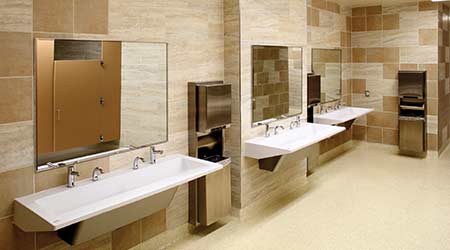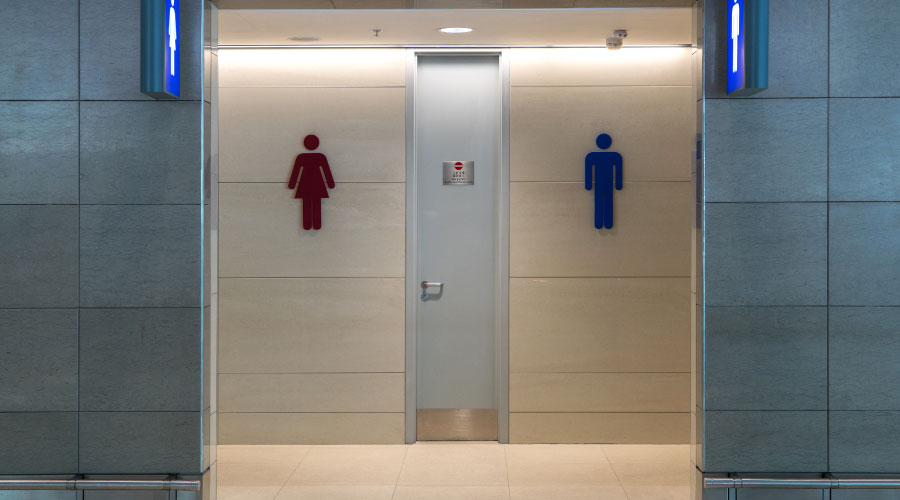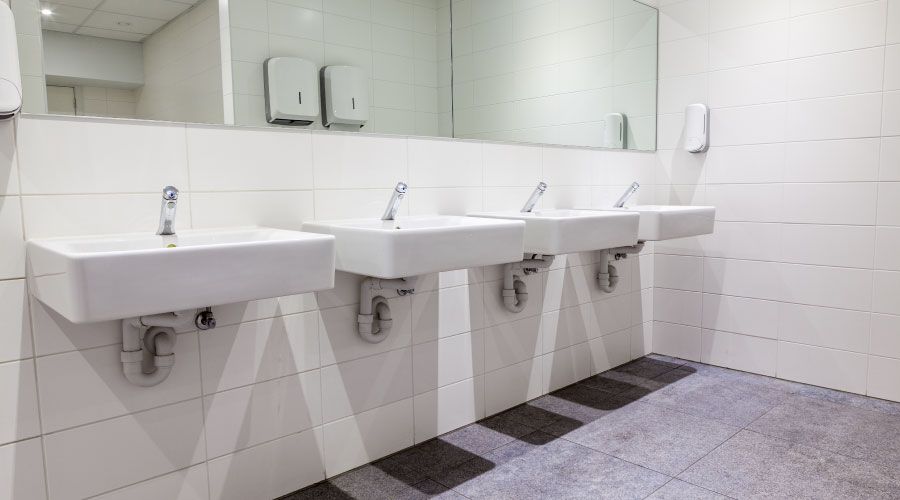Finding Plumbing and Restroom Products that Perform
Part 1 of a three-part article on plumbing and restroom upgrades
When looking to reduce operating costs during restroom renovations, managers generally assume the cost of the components and materials used will be higher. While quality does cost more, managers can achieve many of the above benefits with little or no increase in renovation costs simply through careful design and selection. For those components that do increase costs, it is important to remember that over the life of the restroom, reduced energy, water, cleaning, and maintenance costs will more than offset higher first costs.
One essential step for managers is doing the homework. Become familiar with the latest codes as they apply to restrooms. Green building codes and standards for water use and energy efficiency have been widely accepted by state and local agencies. So facilities might have to comply with them.
Fortunately, manufacturers have responded to these requirements with compliant components and fixtures. Managers need to make certain that all fixtures carry the appropriate compliance label specifications.
Another area where managers need to be careful is in specifying partitions. Partitions constructed from polypropylene and high-density polyethylene have gained popularity due to their corrosion and vandalism resistance. Unfortunately, the materials are flammable. The National Fire Protection Association and the International Code Council are developing standards for building products constructed from these materials.
While compliance with the standards is not mandatory yet, it will be once they are adopted into the building codes. Managers should specify partitions that comply with the latest fire and safety codes. Renovations of existing restrooms, must comply with the 2010 ADA Standards for Accessible Design. Managers can no longer do a one-for-one replacement of components and expect the renovated restroom to meet code requirements. Even placement of such items as flush valves and grab bars must comply with the code requirements in order to avoid expensive reworking of the
renovated facilities.
For these reasons, it is important that someone who fully understands the code requirements completes the restroom design. That person also must understand the other issues managers face, from traffic flow to reduced maintenance costs. That level of understanding is only achieved by clearly defining the priorities before the design phase starts.
James Piper, P.E., is a national consultant based in Bowie, Md. He has more than 35 years of experience with facilities maintenance, engineering and management issue.
Related Topics:














